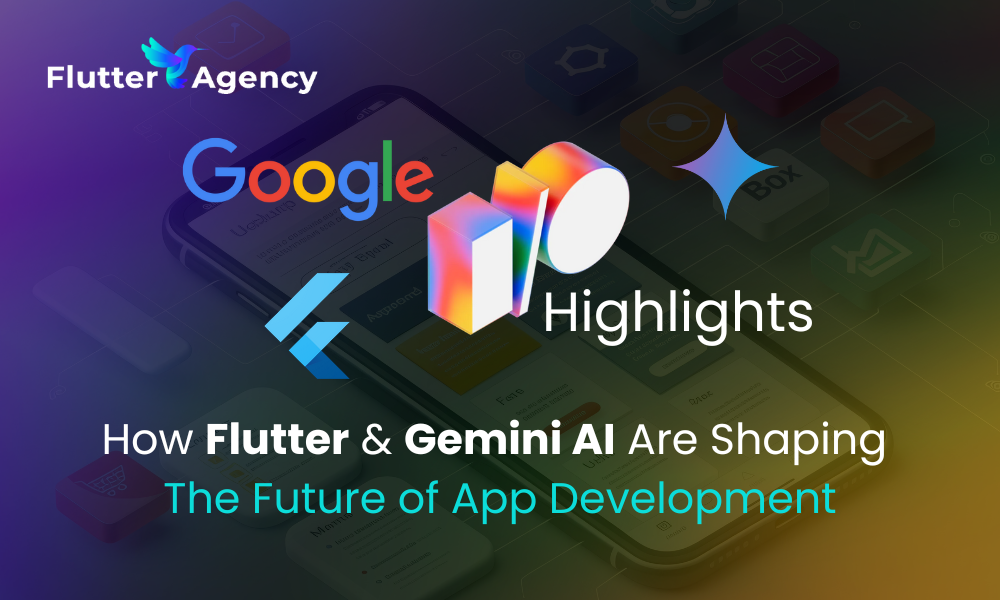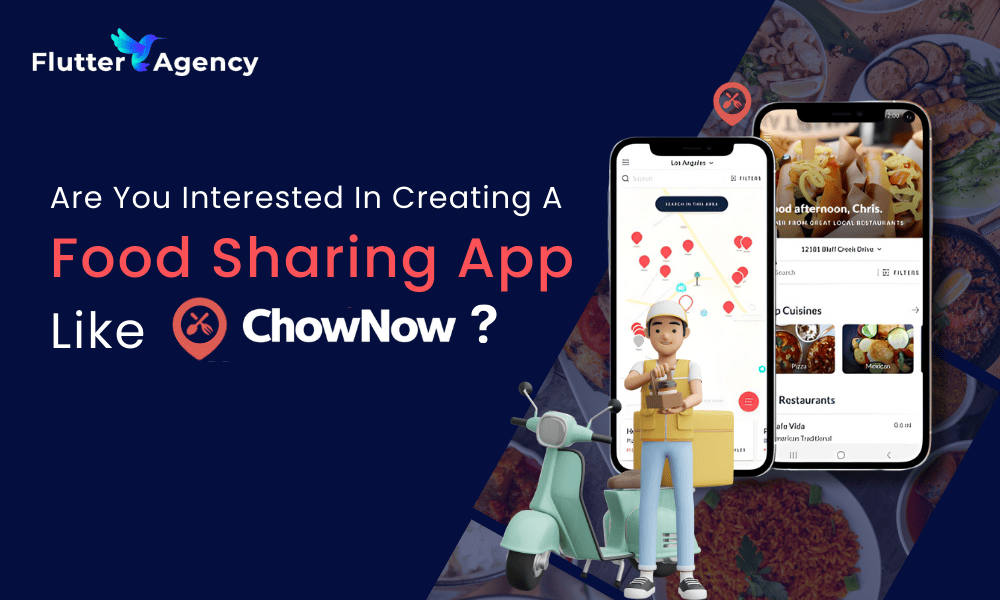Why Flutter is the Future of Cross-Platform Development: Insights for 2024
Discover why Flutter is trending as a framework for cross-platform app development Services. Discover its benefits, and what makes it different from other frameworks, and get insights from succeeding case studies.
In today’s rapidly evolving digital environment, businesses aspire to acquire a broad audience across several platforms, especially Android and iOS. Building separate apps for diverse platforms can take a lot of time and money.
Cross-platform development frameworks provide a solution, allowing developers to create applications that we can utilize on different platforms using a single codebase. This process significantly decreases development time and saves money while guaranteeing a harmonious user experience.
What makes cross-platform development a perfect choice in 2024
Before exploring Flutter application development, let us take a look at the advantages that cross-platform development offers:
Time and cost saver
You can now create the app much faster with one codebase and with fewer resources as compared to separate apps from respective platforms. This summarizes delivering apps sooner and potentially paying less.
Consistency
Cross-platform development gives your app the feel of using iPhones and Androids. The kind of consistency it builds soars brand recognition and makes it easy to use the app no matter what device it might be.
Timely updates
Handling one codebase is way easier than regulating separate ones for each platform. This indicates swifter bug fixes and smoother updates for your application.
Further, we’ll explore what makes cross-platform development a perfect choice for Flutter apps, and discover how Flutter can help you build a mobile app that reaches a wider audience with minimal effort and cost.
What is flutter? benefits, features, concepts and tools
Flutter is a powerful, open-source platform developed by Google, allowing developers to build high-quality, natively compiled mobile apps for both iOS and Android devices with a single codebase. Flutter application development services generally revolve around utilizing natively assembled apps for web, mobile, and desktop from a single codebase. Some of its features include:
- Dart is a coding language that anyone can learn. Dart is a modern language used by Flutter, Dart delivers clear instructions and speedy development, making it most suitable for beginners.
- When it comes to designing a high-performance Flutter app, a reputable Flutter app development company leverages Flutter’s special effects engine, Skia, to build a fast and slick experience.
- Flutter comes with a massive toolbox of customizable building blocks for all types of UI elements. This library allows innovators to produce spectacular and engaging app interfaces without writing lots of code from scrape.
- Flutter’s hot reload feature is revolutionary. Hot reload allows developers to perceive their code modifications imprinted in the app straight away, making development considerably speedier and more manageable.
Key flutter layout concepts
The primary design concepts of Flutter are:
1. Row and column
The classes that comprise of widget are called rows and columns. Widgets inside a Column or Row are referred to as children, while Column and Row themselves are known as parents. A Row arranges its children horizontally, whereas a Column arranges its children vertically.
2. mainAxisSize
Column and Row have distinct main axes: the main axis of a Column is vertical, while that of a Row is horizontal. The `mainAxisSize` property determines how much space a Column or Row will occupy along its main axis.
3. mainAxisAlignment
When mainAxisSize is set to MainAxisSize.max, Columns and Rows can layout their widgets with additional space. The mainAxisAlignment property then determines how the widgets are positioned within this extra space.
4. crossAxisAlignment
The crossAxisAlignment property decides how Columns and Rows position their widgets along the cross-axis. For a Column, the cross axis is horizontal, while for a Row, it is vertical.
5. Flexible and expanded widgets
Originally, Column and Row layouts were fixed-sized widgets, meaning they could not be resized after layout. A Flexible widget can wrap a widget, making it resizable. Similarly, an Expanded widget allows a wrapped widget to fill additional space.
6. SizedBox and spacer widgets
A SizedBox widget can wrap a widget and resize it using its width and height properties. If SizedBox does not wrap any widget, it uses these properties to create empty space. A Spacer widget similarly creates space between widgets.
7. Text, icon, and image widgets
A Text widget displays text that can be customized with various colors, sizes, and fonts. An Icon widget displays a graphical symbol representing a part of the user interface. An Image widget displays an image, which can be referenced via a URL or added to the app package.
Top Flutter Development Tools in 2024
Here’s a quick overview of some top tools available in the market in 2024:
- Panache: This editor tool is perfect for Flutter app development Agencies looking to create customized material themes for their apps. Developers can adjust the design, shapes, colors, and other features to match their clients’ branding.
- Supernova: A valuable tool for importing user interface designs and exporting them to Flutter, making it easier for Flutter application development services to create natively compiled, responsive, and visually stunning applications.
- Count.ly: This product analytics solution allows developers to enhance and analyze customer journeys across desktop, web, and mobile apps. It tracks KPIs and fundamental metrics, helping Flutter app development companies measure app performance and growth effectively.
- Test Magic: A convenient tool for deploying and testing iOS and Android applications, it sustains the seamless deployment and downloading of CI/CD channels on linked devices, which is crucial for Flutter application development services.
- Codemagic: Vital for Flutter app development companies looking to facilitate their development process, Codemagic helps in building, testing, and delivering mobile apps fast. It guarantees steady integration and seamless delivery of Flutter projects.
When to use flutter
1. MVPs and prototyping: Use Flutter to build MVPs and prototypes. It’s an excellent choice. Its fast development cycle and hot reload enable quick testing of ideas. Its user interface components allow for rapid iteration.
2. Cross-platform consistency: If you need a consistent user interface and user experience across iOS, Android, web, and desktop, consider Flutter. Its single codebase and user interface framework provide a great option.
3. Startups and small teams: Flutter is a cheap solution for startups and small dev teams. It cuts the need for separate iOS and Android teams. A smaller group of developers can now maintain a single codebase.
4. Apps with custom user interface: Flutter excels in building custom user interfaces and animations. If your app needs custom user interface elements, use Flutter. Its widgets and flexibility make it ideal.
5. Limited native dependencies: For projects with few native needs, Flutter’s cross-platform features shine.
When Not to Use Flutter
1. Heavy native dependencies: If your application requires deep integration with platform-specific APIs or relies heavily on native features (e.g., advanced camera functionalities, Bluetooth), native development might be a better option.
2. Extremely high-performance requirements: For apps demanding the utmost performance, such as high-end gaming or applications with intensive graphical computations, native development can provide a finer level of control and optimization.
3. Existing native projects: If you are extending or maintaining an existing native app, integrating Flutter might not be practical. It can introduce additional complexity, especially if the project already has established workflows and codebases in native languages.
4. Complex background processing: Apps requiring complex background processing, such as real-time data streaming or continuous GPS tracking, might face challenges with Flutter’s current capabilities. Native solutions may offer more efficient handling of such tasks.
Future prospects of flutter (2024)
Ongoing developments and future updates
Google’s commitment to Flutter is clear. It has invested heavily in it and keeps improving it. The Flutter team is working to improve platform support, performance, and features. The roadmap includes major upgrades to tooling, better docs, and stronger community support. These efforts aim to keep Flutter a top choice for developers seeking a fast, flexible cross-platform solution.
Predictions for flutter’s growth and adoption
As Flutter continues to evolve, its adoption rate is expected to rise. The framework can deliver high-quality apps, fast and cheaply. So, it’s a strong contender in cross-platform development. Experts predict a surge in Flutter’s popularity among developers and businesses. It will then secure its place in mobile development. This trend suggests that Flutter will shape the future of cross-platform app development in 2024.
Conclusion:
Flutter has key benefits for cross-platform development. It is cost-efficient. It provides a unified user experience. It uses a single codebase. It ensures consistent performance. These strengths make it an appealing choice for developers in 2024 and beyond.
With a growing community and Google’s support, Flutter will dominate cross-platform app development. Its success in high-profile apps backs this. To create efficient, high-performing apps, now is the time to embrace Flutter.
Ready to transform your app development?
Dive into our insights on why Flutter is the game-changer for cross-platform development in 2024.
It offers extensive customization options and integrates smoothly with various tools and platforms. Additionally, its hot reload feature accelerates development, enabling developers to experiment and iterate quickly.
Furthermore, Flutter’s strong documentation and active community provide valuable resources and support. As the framework evolves, it continues to introduce innovative features that enhance app capabilities. This makes Flutter a forward-thinking choice for long-term app development projects.
Contemporary ventures
Recent blog
ready to get started?
Fill out the form below and we will be in touch soon!
"*" indicates required fields


















